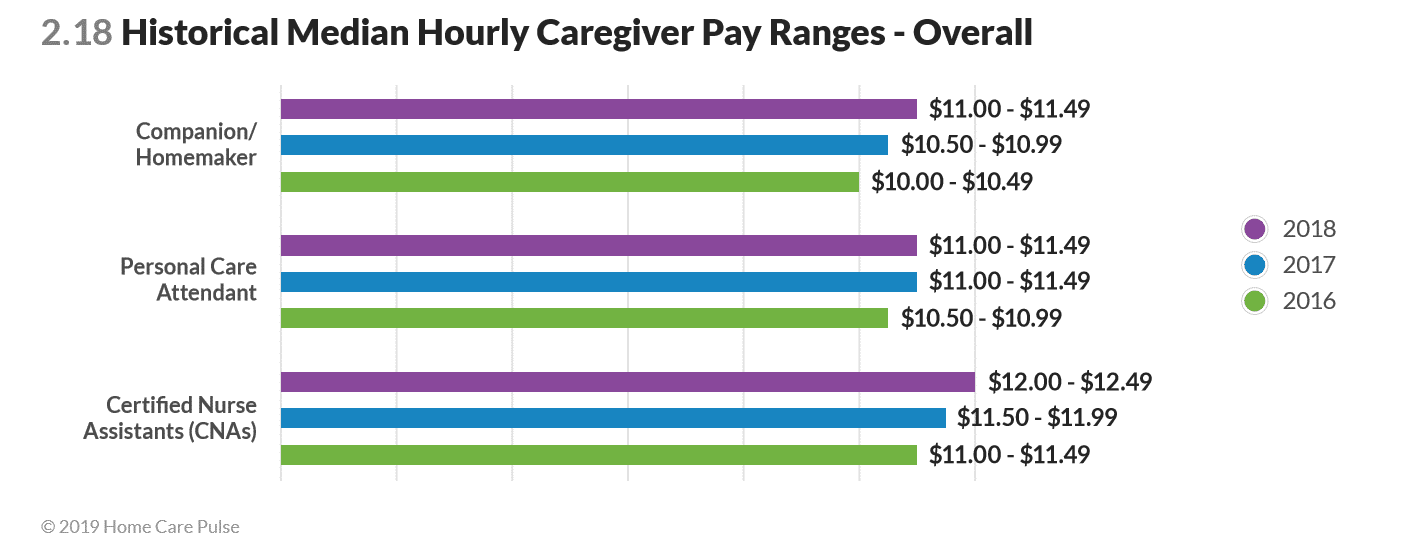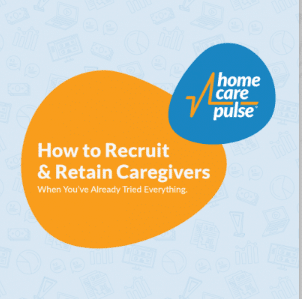How Much Should You Be Paying Your Caregivers in 2019?

Raising wages is never easy on the bottom line, and it’s not always necessary for every agency. However, it’s important that every agency continually evaluate whether they’re competitive or whether it’s time to step up their game.
Do you know what your competition is paying?
With the lowest unemployment rate in history, home care agencies across the country are raising their wages and adding other benefits in order to continue to attract qualified employees.
While it’s not in the cards for most agencies to simply start paying caregivers significantly more without charging clients more, it’s important to track what competing agencies and other sources of competition are offering and frequently evaluate whether it’s time to increase your wages to stay competitive.
Why Are Caregivers Wages Going Up?
Individuals becoming more able to provide for themselves is always a good thing, but that doesn’t mean it doesn’t present challenges for an industry that already deals with thin margins and constant staffing challenges.
Some of the main reasons for the upward trends in pay include:
- LIVE WEBINAR
Turning Scores into Strengths: How to Use CAHPS and Star Ratings to Create Positive Care Outcomes
The Advantages of Paying More
With many home care agencies operating on thin margins already, raising wages can be a tough proposition. However, agencies that fail to pay competitively will run the risk of not having enough employees even to staff their existing cases.
According to a poll we conducted of over 400 agencies during a webinar earlier this year, over 60% of agencies have turned down a case in the last 90 days because they didn’t have the caregivers to staff it.
Not only does paying more help you attract more applicants, but it makes your current employees more likely to stick with your agency. According to the 2019 Home Care Benchmarking Study, every $1/hour increase in pay for your caregivers results in a 10% decrease in caregiver turnover. A year ago, a $1/hour increase only resulted in a 5% decrease in turnover.
In other words, paying more has twice as much impact on retention as it did just a year ago.
And with the average cost of replacing a caregiver at $2,600 once you factor in hidden and indirect costs, the cost of not paying competitively adds up quickly.
What the Competition is Paying
So, how can you tell whether the wages you’re paying are in the right ballpark? Let’s turn to the 2019 Home Care Benchmarking Study.
Here’s what home care agencies in the study reported paying their caregivers in 2018, split up by role:

For more context, here’s the median pay by region for a personal care attendant:
Note that while pay varies significantly depending on region, pay across the board is going up year-to-year. It’s also important to note that wages for live-in caregivers are increasing significantly, with the average pay for a 24-hour shift rising by $25.
NOTE: There’s a lot more where this came from. To see detailed wages split up by region, more information on live-in caregiver pay, and other information like top recruitment sources and financial reports, see the 2019 Home Care Benchmarking Study. You can order a copy and preview the Study here.
Know Your Local Competition
In addition to evaluating competition at the high level we’ve provided here, you should become very familiar with what local competition is paying. One resource for this is the Pay Portal at myCNAjobs.com/pay. Over time, you should pay attention to which other local companies are your primary competition for employers and track what they’re offering in their job postings.
Raising wages is never easy on the bottom line, and it’s not always necessary for every agency. However, it’s important that every agency continually evaluate whether they’re competitive or whether it’s time to step up their game.
A Balanced Approach to Recruitment and Retention
It’s important to take a balanced strategy to competing for employees that uses every tool available. Pay is a critical component; however, there are other elements that are important to providing a great all-round experience to your caregivers. We’ve got an arsenal of resources to help with this—we recommend starting with these:
What are you doing to make your agency the place caregivers want to work? Tell us about it in the comments! (We respond to every comment.)





